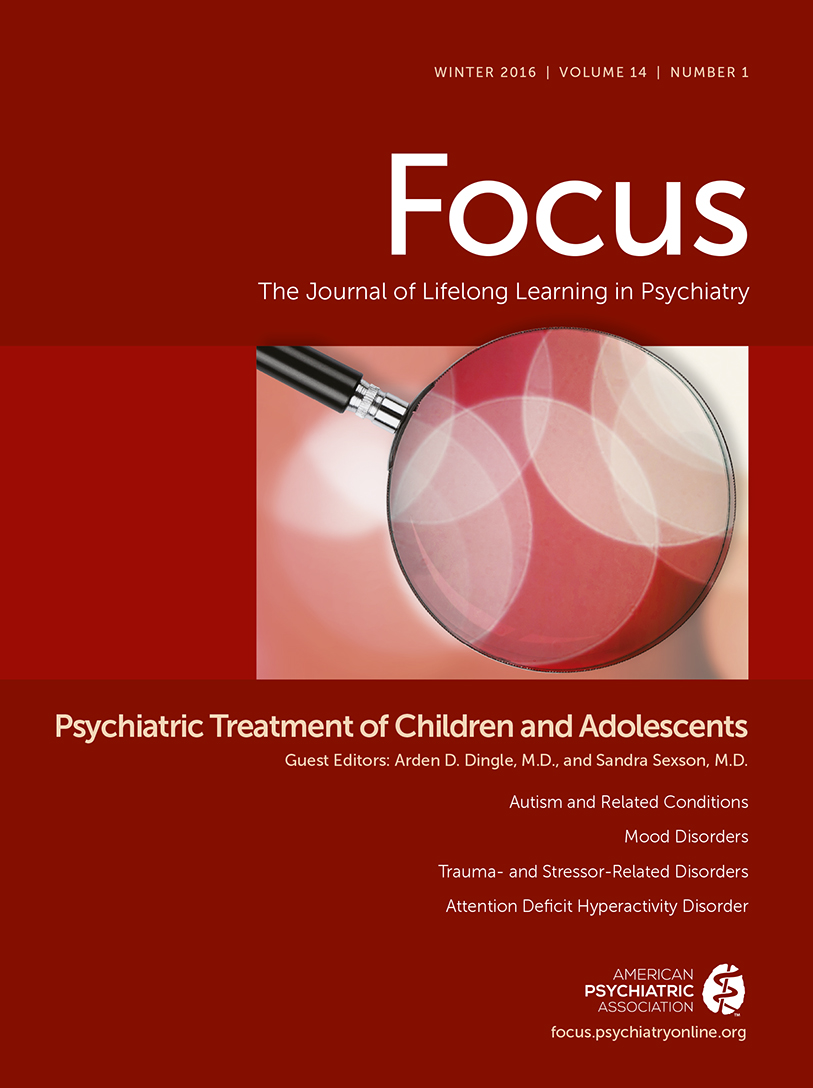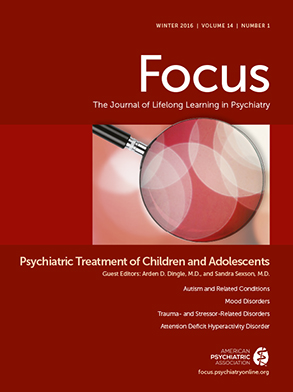Disruptive Mood Dysregulation Disorder: A New Diagnostic Approach to Chronic Irritability in Youth
Abstract
An 8-Year-Old Boy With Frequent Temper Outbursts is Evaluated.
History of Presenting Illness
Conceptualization
Treatment
Differential Diagnosis
| Criteria | DMDD | Oppositional Defiant Disorder | Intermittent Explosive Disorder |
|---|---|---|---|
| Temper outbursts/ irritable mood | All (A through J) are required | A. At least four of eight A criteria are required | A through C are required |
| A. Severe recurrent temper outbursts manifested verbally and/or behaviorally that are out of proportion in intensity or duration to the situation or provocation. | Criteria A.1–A.3: 1. Often loses temper; 2. Often touchy or easily annoyed; 3. Often angry or resentful. No specific frequency for 1, 2, or 3. | A. Recurrent behavioral outbursts stemming from failure to control aggressive impulses: 1. Verbal or physical aggression toward property, animals, or others at least twice weekly for at least 3 months that does not result in injury or destruction. 2. Three or more behavioral outbursts resulting in injury or property destruction. | |
| B. The temper outbursts are inconsistent with developmental level. | B. Magnitude of aggression is grossly disproportionate to provocation. | ||
| C. The temper outbursts occur, on average, three or more times per week. | C. Aggressive outbursts are impulsive, not premeditated or committed to achieve tangible objectives. | ||
| D. The mood between temper outbursts is persistently irritable or angry most of the day, nearly every day, and is observable by others. | |||
| Additional clinical criteria | None | Criteria A.4–A.8: 4. Often argues with adults; 5. Often defies or refuses to comply with adult rules; 6. Deliberately annoys others; 7. Often blames others for mistakes; 8. Spiteful/vindictive (at least twice in the past 6 months). | None. |
| Duration | E. Criteria A–D have been present for at least 12 months, with no period of more than 3 consecutive months without. | Four of the eight criteria have been present for at least 6 months. If younger than age 5, the “behavior” must occur most days. If age 5 or older, the “behavior” must occur at least once per week. | A.1. Outbursts occur at least twice weekly, on average, for 3 months. A.2. Three outbursts causing destruction of property or physical injury to people or animals, in the past 12 months. |
| Number of settings | F. Criteria A–D are present in at least two of three settings (home, school, peers) and are severe in at least one setting. | No settings stipulated, but must occur with at least one individual other than a sibling. | No settings stipulated. |
| Age range and onset age | G. The child must be at least age 6 and no older than age 18. H. Criteria A–E must have occurred before age 10. | No minimum or maximum onset age. | E. At least 6 years old, or equivalent developmental level. No maximum age. |
| Is not limited to: | J. An episode of major depressive disorder. | None. | F. Major depressive disorder, bipolar disorder, DMDD, psychosis, antisocial personality disorder, borderline personality disorder. |
| Is not better explained by: | J. Autism spectrum disorder, posttraumatic stress disorder, separation anxiety disorder, persistent depressive disorder. | C. Does not occur exclusively during a psychotic, substance use, depressive, or bipolar disorder. | F. Major depressive disorder, bipolar disorder, DMDD, psychosis, autism spectrum disorder, schizoid personality disorder, borderline personality disorder. Diagnosis not given in patients ages 6 to 18 if aggression occurs as part of an adjustment disorder. |
| Cannot coexist with: | J. Oppositional defiant disorder, intermittent explosive disorder, bipolar disorder. DMDD is not diagnosed if there is a history of a manic or hypomanic episode. | C. DMDD: If criteria for both oppositional defiant disorder and DMDD are met, only the latter diagnosis is assigned. | DMDD: If criteria for both intermittent explosive disorder and DMDD are met, only the latter diagnosis is assigned. |
Reliability and Validity
Treatment Considerations
Conclusions
References
Information & Authors
Information
Published In
History
Authors
Metrics & Citations
Metrics
Citations
Export Citations
If you have the appropriate software installed, you can download article citation data to the citation manager of your choice. Simply select your manager software from the list below and click Download.
For more information or tips please see 'Downloading to a citation manager' in the Help menu.
View Options
View options
PDF/EPUB
View PDF/EPUBGet Access
Login options
Already a subscriber? Access your subscription through your login credentials or your institution for full access to this article.
Personal login Institutional Login Open Athens loginNot a subscriber?
PsychiatryOnline subscription options offer access to the DSM-5-TR® library, books, journals, CME, and patient resources. This all-in-one virtual library provides psychiatrists and mental health professionals with key resources for diagnosis, treatment, research, and professional development.
Need more help? PsychiatryOnline Customer Service may be reached by emailing [email protected] or by calling 800-368-5777 (in the U.S.) or 703-907-7322 (outside the U.S.).

